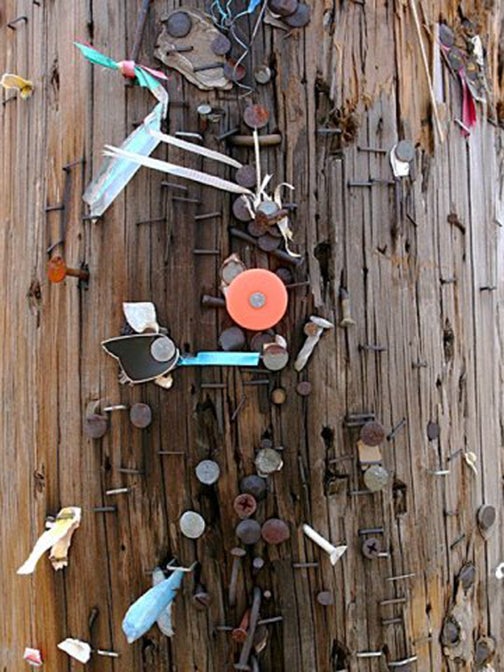Severe storms and natural disasters can cause a variety of electrical safety hazards in and around our homes. Lightning, downed power lines, and floods are just a few of the serious safety concerns associated with storms. Unfortunately, many of these electrical safety hazards remain long after the storm itself has passed.
To help protect you from storm-related electrical hazards, the Electrical Safety Foundation International (ESFI) and Farmers' Electric Cooperative are providing answers to common storm safety questions about:
Lightning
-
Move to a low point. Lightning hits the tallest available object, so get down low in a crouched position if you are in an exposed area.
-
Stay away from trees.
-
Avoid metal. Don’t hold onto metal items like bats, golf clubs, fishing rods, tennis rackets, or tools. Stay away from metal sheds, clotheslines, poles, and fences.
-
Stay away from water, including pools, lakes, puddles, and anything damp—like grass.
-
Don’t stand close to other people. Spread out.
Not necessarily, but sometimes. If you feel a tingling sensation or your hair stands on end, lightning may be about to strike. Do not lie down. Instead, crouch down, tuck your head, and cover your ears.
Slow down and use extra caution. If possible, pull off the road into a safe area.
Do not leave your vehicle during a thunderstorm. A vehicle is considered safe during a thunderstorm if it is fully enclosed with a metal top such as a hard-topped car, minivan, bus, truck, etc. While inside a safe vehicle do not use electronic devices, such as radio communications.
Follow these indoor lightning safety tips to help keep your family safe inside while it’s storming outside:
-
To avoid lightning strikes, stay away from windows and doors.
-
If possible, unplug electronic equipment before the storm arrives. Avoid contact with electrical equipment and cords during storms.
-
Avoid contact with water and plumbing, including sinks, baths, and faucets.
Use corded telephones only for emergencies. You can use cordless or cellular phones.
Doghouses are not lightning-safe, and chained animals can easily become victims of lightning strikes. You should bring your pets inside to protect them.
Power Lines
If you see a downed power line, move at least 10 feet away from the line and anything touching it. The human body is a ready conductor of electricity.
The proper way to move away from the line is to shuffle away with small steps, keeping your feet together and on the ground at all times. This will minimize the potential for a strong electric shock. Electricity wants to move from a high voltage zone to a low voltage zone—and it could do that through your body.
If you see someone who is in direct or indirect contact with the downed line, do not touch the person. You could become the next victim. Call 911 instead.
Do not attempt to move a downed power line or anything in contact with the line by using another object such as a broom or stick. Even non-conductive materials like wood or cloth, if slightly wet, can conduct electricity and then electrocute you.
Do not drive over downed power lines.
If you are in your car and it is in contact with the downed line, stay in your car. Tell others to stay away from your vehicle.
If you must leave your car because it’s on fire, jump out of the vehicle with both feet together and avoid contact with the live car and the ground at the same time. This way you avoid being the path of electricity from the car to the earth. Shuffle away from the car.
Water is a good conductor of electricity. Any amount of water—even a puddle—could become energized. Be careful not to touch water—or anything in contact with the water—near where there is a downed power line.
Flooded Areas
Use extreme care when stepping into flooded areas. Submerged outlets or electrical cords can energize water, posing a lethal trap.
Do not use electrical appliances that have been wet until they have been examined by a qualified service repair dealer. Electrical equipment exposed to water can be extremely dangerous if re-energized without proper reconditioning or replacement.
Electrical items, such as circuit breakers, fuses, ground fault circuit interrupters (GFCIs), receptacles, plugs, and switches, can malfunction when water and silt get inside. Discard them if they have been submerged. Have a licensed, qualified professional replace them.
Ocean water and salt spray can be particularly damaging to electrical equipment due to the corrosive and conductive nature of the salt water residue. Damage to electrical equipment can also result from exposure to flood waters contaminated with chemicals, sewage, oil, and other debris.
No matter what caused the flood, electrical appliances should be examined by a qualified service repair dealer before being re-energized, and electrical items that were submerged should be discarded and replaced by a licensed, qualified professional.
Yes—downed power lines or submerged outlets from adjacent homes could energize the water. Use extreme caution when entering any flooded area.
Portable Generators
ESFI strongly recommends that a licensed electrician install home generators to ensure they meet all local electrical codes.
Also, make sure your generator is properly grounded in accordance with the manufacturer’s instructions.
Do not connect generators directly to the household wiring unless an appropriate transfer switch has been installed by a licensed, qualified electrician.
Without the proper transfer switch, power provided by the generator can “back feed” along the power lines, creating a significant electrocution hazard for anyone coming in contact with the lines, including lineworkers making necessary repairs.
Never operate a generator inside your home or in any other enclosed—or even partially enclosed—area. Generators very quickly produce carbon monoxide, which can easily enter your home.
Place the generator on a dry surface under an open, canopy-like structure. Do not operate the generator in wet conditions or where there is standing water.
Opening windows or doors or using fans do not provide adequate ventilation to prevent the build-up of carbon monoxide. Generators must be located outside a safe distance away from your home’s windows, doors, and vents, through which carbon monoxide can enter your home.
Preliminary research from the Centers for Disease Control and Prevention (CDC) and the National Institute of Standards and Technology (NIST) indicates that even 15 feet from the home is too close to operate a generator safely.
Remember your neighbors, too. Keep your generator a safe distance away from their homes as well.
Carbon monoxide (CO) is a poisonous gas that is created when common fuels such as natural gas, oil, wood, or coal burn incompletely. This odorless, colorless, tasteless gas is often called the “silent killer” because it is virtually undetectable without the use of detection technology like a CO alarm. Extremely high levels of carbon monoxide can be fatal within minutes.
From 1999-2009, 542 carbon monoxide deaths associated with portable generators were reported to the Consumer Product Safety Commission (CPSC).
More than 80 percent of carbon monoxide deaths related to portable generators occurred in the home, often resulting from operation of a portable generator within the living space of the home, including the basement, closets, and doorways.
Symptoms of carbon monoxide poisoning may include fatigue, shortness of breath, drowsiness, headache, and nausea. Get to fresh air right away if you feel dizzy or weak while running your generator.
Make sure that there is at least one battery-operated or battery-backup carbon monoxide alarm in your home. Test it before using your generator.
No. Keep children away from portable generators at all times. Also be sure to store generator fuel out of reach of children.
The capacity of generators varies. Follow the manufacturer’s instruction carefully. Do not overload the generator.
Unplug all appliances from the generator before shutting it down. Turn the generator off and let it cool down before refueling. Refueling the generator while it is running is a significant fire hazard.
Wet Electrical Equipment
Yes—they still apply. Do not use electrical appliances that have been wet until they have been examined by a qualified service repair dealer. Water can damage the motors in electrical appliances, such as furnaces, freezers, refrigerators, washing machines, and dryers.
The National Electrical Manufacturers Association (NEMA) has produced a brochure, Guidelines for Handling Water-Damaged Electrical Equipment, for use by suppliers, installers, inspectors, and users of electrical products to provide advice on the safe handling of electrical equipment that has been exposed to water. The NEMA brochure may be downloaded free of charge at www.nema.org/stds/water-damaged.cfm.
Post-Evacuation
First and foremost, do NOT return home until instructed by the appropriate local authorities. Once they give the go-ahead:
-
Return home during daylight hours, especially if power has not been restored.
-
If you smell gas, leave the premises and notify emergency authorities immediately. Do not turn on lights, light matches, or engage in any activity that could create a spark.
Yes. Even if you have been authorized to return home, you should still take precautions to protect yourself from electrical hazards posed by downed power lines, flooded areas, and water-damaged appliances and electrical equipment.
Additional Power Pole Safety:
With political races, garage sales, family reunions, wedding receptions, and live auctions, there is always a proliferation of signage. And then there are also basketball goals, deer stands, satellite dishes, and birdhouses. What is this all leading up to? The placement of signs or any other item on power poles.
Placing signs on poles could create a serious hazard and, in some cases, create a potentially fatal accident. Remember, Farmers' Electric Cooperative line crews wear special protective clothing and gloves. Anything attached to the pole, such as nails, tacks or staples can puncture rubber gloves and other safety equipment, making line workers vulnerable to electrocution. Co-op crews get called out at all hours and in the worst conditions. It would be impossible to notice a nail or a tack in a driving rain at 2 o'clock in the morning. Another potential problem, which could cause safety issues for the lineman, can occur if they are climbing a pole. The rubber gloves can be punctured during the climb. Linemen wear special equipment called "hooks" that are attached to their boots. The hooks are sharp metal spikes that sink into the poles as they climb they way up and down the pole. If a lineman puts all of his weight on the hook and it strikes a nail, the hook would not penetrate into the pole, causing the lineman to possibly slip.
Please do not place any signs on power poles or, for that matter, any other item. These items actually violate the National Electrical Safety Code, which are used to provide electric utility safety guidelines. Please help us keep our linemen safe. Fixtures not belonging to the cooperative will be removed by Farmers' Electric Cooperative personnel to ensure the safety of our employees.

